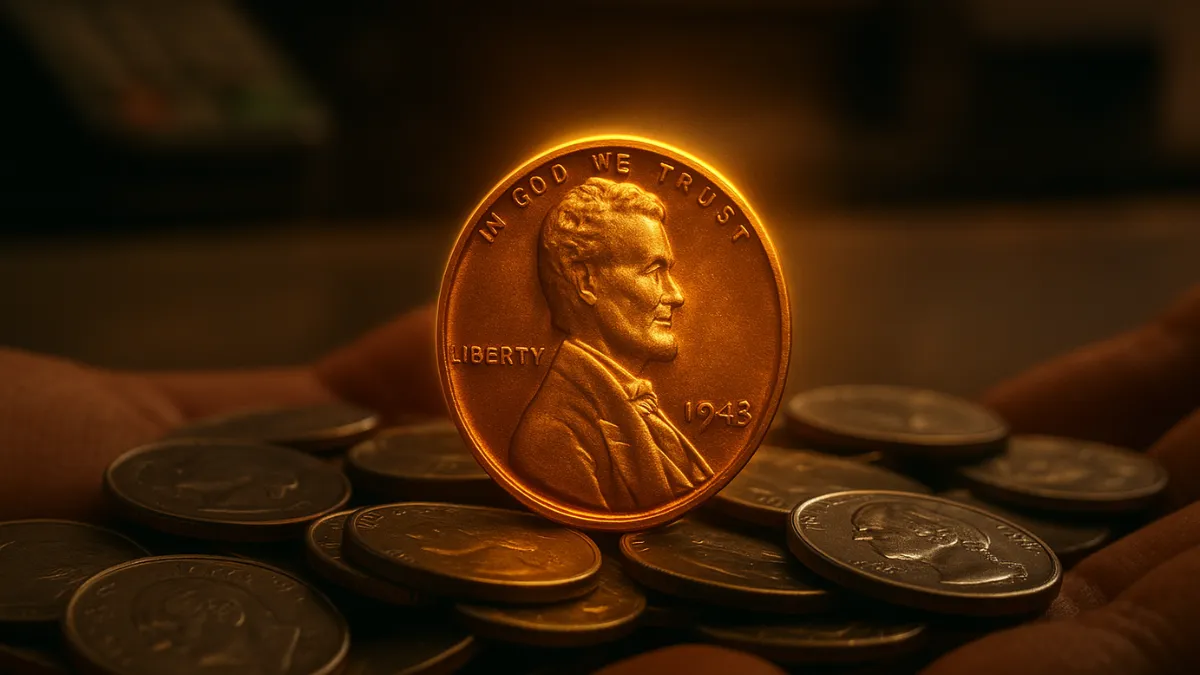In a world dominated by digital payments, it’s hard to imagine a single penny being worth a fortune. Yet, some Lincoln Wheat Pennies, first introduced in 1909, have become incredibly valuable collector’s items. These small copper coins are now prized for their historical significance and rarity.
Amazingly, one of these rare pennies sold for $507,000! Even more intriguing, experts believe that a few of these special coins could still be circulating unnoticed in everyday change. That’s why checking your pennies can be more exciting than you think—it might just lead to an unexpected treasure in your pocket.
The History of the Lincoln Wheat Penny
The Lincoln Wheat Penny debuted in 1909 to honor Abraham Lincoln’s 100th birthday. It became notable as the first U.S. coin to feature a real person instead of an allegorical figure like “Liberty.” The design was created by artist Victor David Brenner, with Lincoln’s portrait on the front and two wheat stalks framing “
ONE CENT” and “UNITED STATES OF AMERICA” on the back. This design remained in circulation until 1958 when it was replaced by the Lincoln Memorial reverse. Collectors value these coins for their historical impact and as a turning point in American coinage design traditions.
Why Some Wheat Pennies Are Worth So Much
Although hundreds of millions were made, a few specific Lincoln Wheat Pennies stand out for their rarity and high value. The 1909-S VDB penny, struck in San Francisco, is extremely rare because only 484,000 were produced. Another highly prized coin is the 1943 copper penny.
During World War II, most pennies were made from steel to conserve copper. However, a few copper versions were mistakenly struck and can now fetch prices above $100,000. These rare finds make Lincoln Wheat Pennies some of the most sought-after coins among collectors and history enthusiasts alike.
The “Doubled Die” Error
Some pennies owe their high value to minting mistakes, with one of the most famous being the “doubled die” error. This happens when a coin’s design is accidentally stamped twice, slightly misaligned, making parts like dates or letters appear doubled.
The 1955 Doubled Die Penny is a prime example, showing clear doubling that even the untrained eye can notice. If found in top condition, this coin can be worth several hundred thousand dollars. The uniqueness and visibility of the error make these coins especially attractive to collectors and numismatists searching for rare minting mishaps.
Could These Pennies Still Be Out There?
Absolutely! Unlike rare art that lives in museums, coins were made to circulate and be used by everyone. This means a rare Wheat Penny could still be hiding in your spare change, piggy bank, or family coin jar. It’s entirely possible these treasures have been unknowingly passed down for generations.
That’s why everyday coin-checking has become an exciting hobby for many—because there’s always a chance you might stumble upon a hidden gem. It’s this mystery and the thrill of discovery that continue to spark interest in old pennies around the country.
How to Spot a Valuable Wheat Penny
To identify a valuable Lincoln Wheat Penny, begin by checking the date on the coin. Key dates like 1909, 1914, 1922, 1931, and 1943 are known to be potentially valuable. Also, observe the small mintmark under the date: “S” for San Francisco, “D” for Denver, and no letter for Philadelphia.
For 1943 pennies, use a magnet—steel pennies stick, but rare copper ones won’t. Lastly, examine the coin carefully for doubling in letters or numbers, which might suggest a valuable error. Being observant and detail-oriented can help you uncover an unexpected collectible.
People Are Searching Everywhere
News stories about rare coins have inspired a surge of interest among the public. More people are rummaging through their old jars, pockets, and drawers in hopes of striking it rich with a lucky penny. Coin shows are drawing bigger crowds, and online marketplaces are flooded with listings of rare Lincoln Wheat Pennies.
This growing interest not only makes the hobby fun and potentially profitable but also connects people with American history. Collecting coins is no longer just for experts—it’s become an exciting adventure anyone can join by simply paying closer attention to everyday change.
The Fun of the Hunt
The real joy for many collectors doesn’t come from profit, but from the thrill of the search. Finding a rare coin hidden in plain sight turns everyday life into an exciting treasure hunt. It’s a hobby anyone can enjoy, no matter their age or experience level.
You never know when your change might include something extraordinary. That’s why checking every penny you get can be a rewarding and even life-changing habit. The possibility that a small coin could hold great value adds a little magic to the mundane task of emptying your pockets.
FAQs
What makes a 1943 penny valuable?
Most 1943 pennies are steel, but the rare copper versions were struck in error and can be worth over $100,000.
How can I tell if I have a doubled die penny?
Look closely at the date and lettering. If they appear doubled or fuzzy, you might have a rare error coin.
Do all old Wheat Pennies have value?
No, not all are rare. Most are common, but specific years or minting errors can make a few extremely valuable.
Where should I take a rare coin for a check-up?
Visit a trusted coin dealer or certified appraiser to confirm a coin’s authenticity and value.
Jimmie S. Medina is a seasoned food enthusiast and writer known for his vibrant takes on global cuisines. With a knack for blending culture and creativity, Jimmie’s articles offer more than recipes—they tell delicious stories. Whether it’s street food or gourmet dining, he captures the essence of food in every piece.
